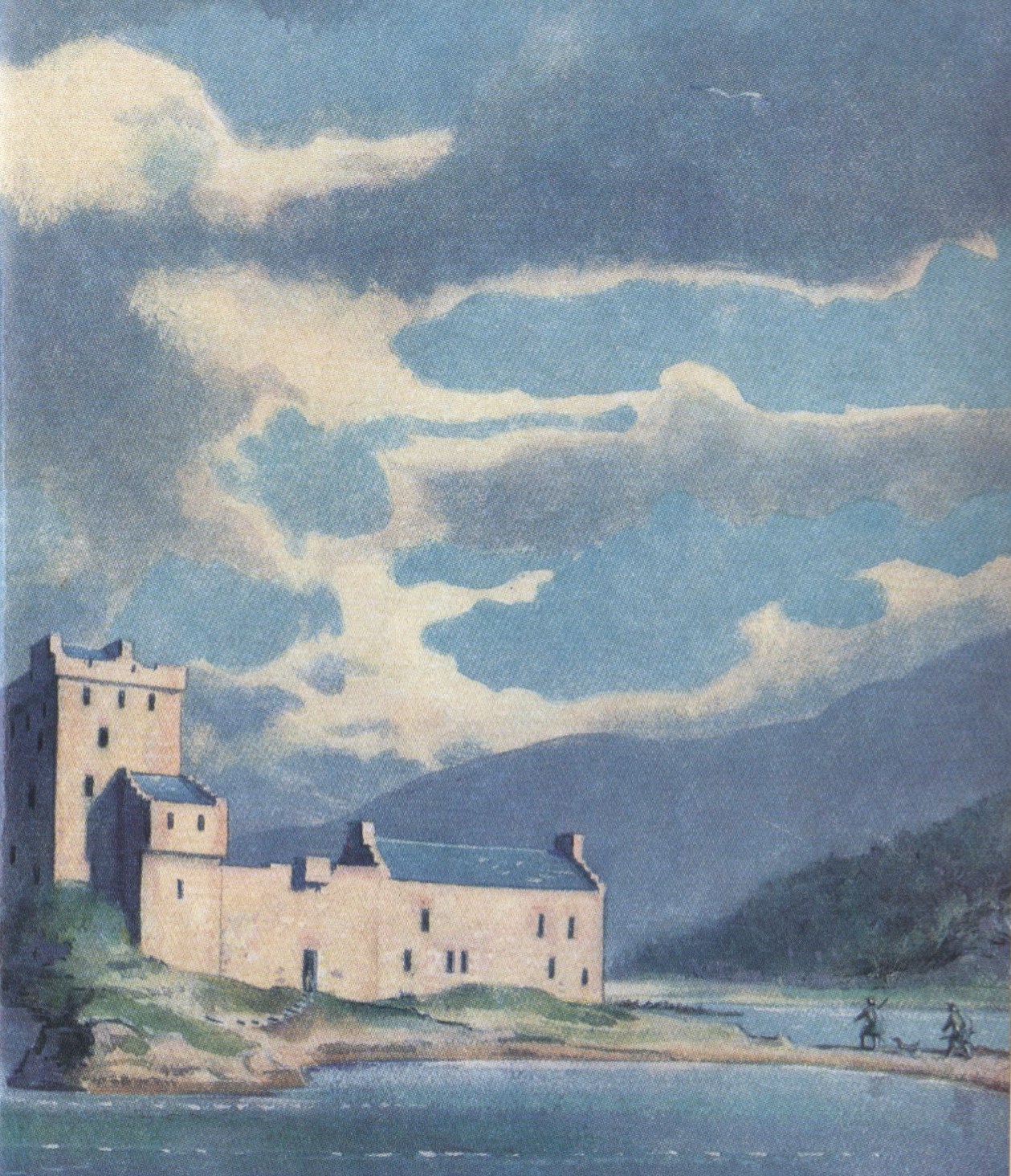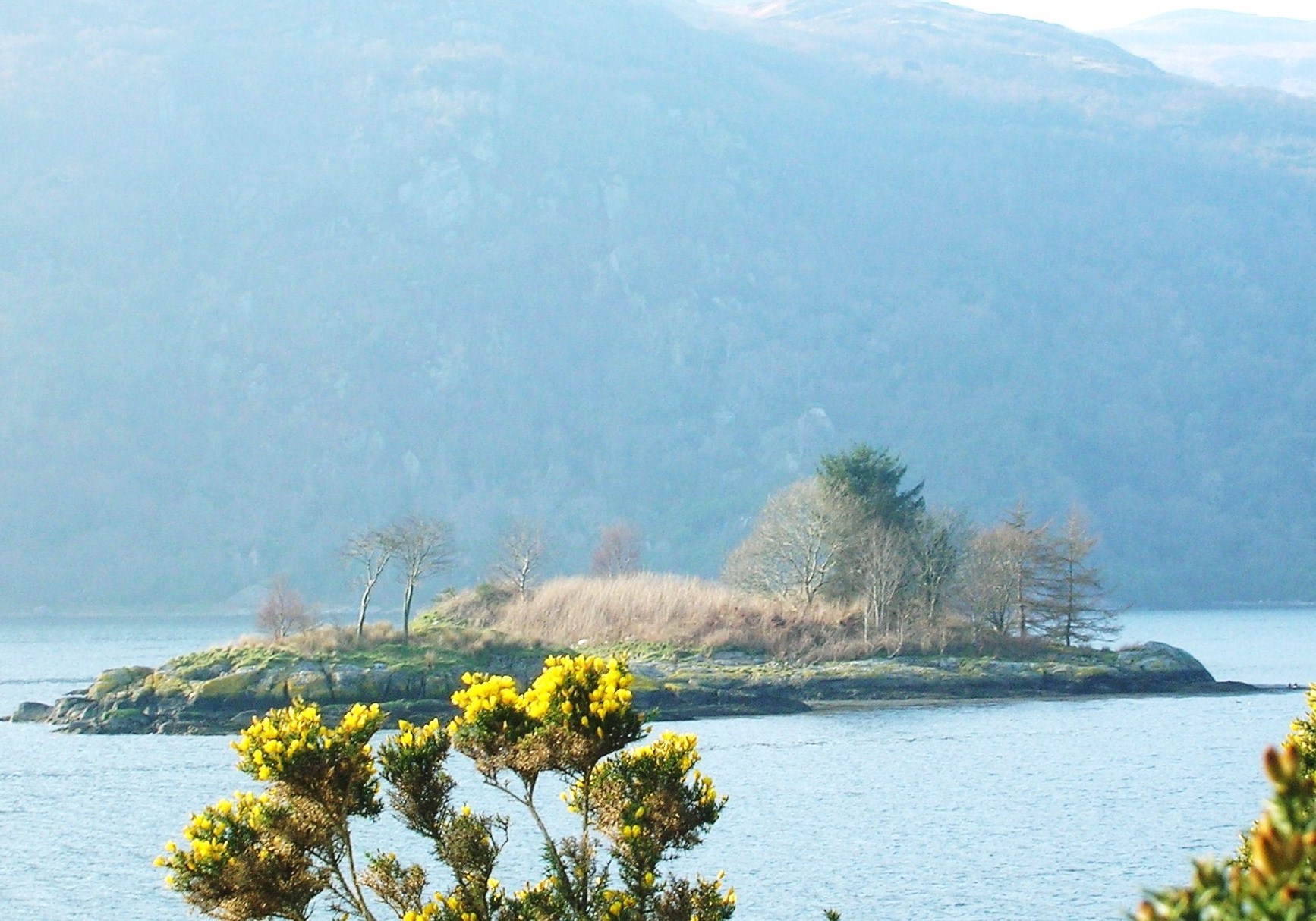There had been a fortress for some time on the island Eilean Dearg or Eilean Greig, in Loch Riddon (also known as One Tree Island – though that tree is now longer there). The castle was a Campbell stronghold held by Campbell of Loch Awe in the 1400s and then by Campbell of Eileangreig in the 1600s before the land was passed on to the Campbell of Southall in the early 1700s.
In 1685 the Duke of Argyll, in collusion with the Duke of Monmouth in England, led an ill fated rebellion against the “arbitrary Tirannie” of King James VII. From exile he returned to the west coast, but raised little support. Based for a time on Bute, the Duke ordered Rothesay Castle to be burnt in retaliation for the government’s burning of his castle at Carrick on Loch Goil.

Argyll moved from Bute to the old castle on Eilean Greig where he stored his arms and ammunition. Desperate for support he recruited in Colintraive and several men joined him, probably against their will. Colintraive members of ‘List of Rebels’ compiled after the rebellion included:
Portenelan; Archibald McIntailor
Ardintraive; Malcolm McAlpine
Ardghaldrich; mWilliam McErchar and, Archibald McErchar and John Mclean
Steilag John and Alex. McIlmichell
The leaders of the rebellion thought that Eilean Greig castle would be safe from attack and left large amounts of arms and 500 barrels of gunpowder there. However they were wrong and two well armed government ships navigated their way through the Kyles and into Loch Riddon where they attacked the castle.
The defenders took one look at the attacking force and fled leaving the guns and ammunition behind. A landing party from the ships removed the guns, but lit a fuse to the gunpowder and the castle was literally blown off the island and nothing now remains but a few stones.

After forays through Glendaruel the rebel army moved south to defeat and Argyll was eventually captured, brought to Edinburgh and introduced to the Maiden, an early, Scottish form of the guillotine.
Both rebel and government armies had marched through Cowal during the rebellion causing the devastation that armies inevitably leave in their wake and in the spring of 1686 the major landowners petitioned the Privy Council for some remission of taxation as;
“the countrey was dispeopled of men, first the late Earle of Argyll and then the King’s forces, and then everie bodie at plesure, pillaged and robbed and neither one farthing of their owne rents not publict dues could be gotten in this conditione.”
‘The Lamont Clan’ H. Mckechnie